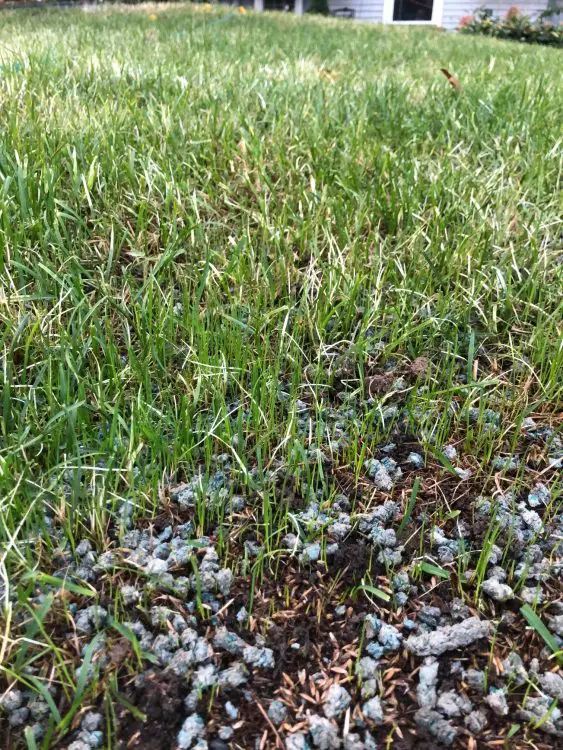Table of Contents
Whether you’re starting a new lawn or overseeding an existing lawn, you’ll need to know how much seed to buy and use. The seeding rates will vary depending on several factors such as grass varieties, cool-season and warm-season lawns, and the total square footage of your lawn.
We’ll figure out how many pounds of seed you need, and how many grass seed bags are needed to grow a healthy lawn.
How much grass seed to use per square foot?
You will need between 3-10 pounds of grass seed per 1,000 sq. ft.
The following factors will dictate how much is needed (high/low)
1. Grass types and varieties (KBG, TTTF, etc.)
2. Overseeding an existing lawn, or
3. Seeding a new lawn on bare dirt
Lawn care is measured in 1,000 square foot increments.
For example, you’ll need about 3 pounds of 24-0-6 fertilizer to deliver 3/4 pounds of Nitrogen per 1,000 sq. ft. You’ll also use 4 oz. of Propiconazole per gallon per 1,000 sq. ft. to prevent snow mold. And the same goes for grass seeds.
How much grass seed per acre?
This can be figured out with some quick and simple math. There are 43,560 square feet in one acre. Since we need to get the area in square feet, the formula is: 43,560/1,000 = 43.56. If you have one acre and need to overseed an existing lawn at 3 pounds per 1,000, you will need 131 total pounds of grass seed (43.56 * 3 = 130.68).
How much grass seed for overseeding?
For overseeding, this is largely dependent on the type of grass seed that you choose. For cool-season lawns – Kentucky Bluegrass (KBG), Perennial Ryegrass (PRG), Tall Fescue (TTTF) – you will get different pounds per 1,000 sq. ft.
Kentuckey Bluegrass grass seeds are much smaller than both Perennial Ryegrass and Turf Type Tall Fescue seeds, and a pound of KBG can have up to 6x the total number of seeds than PRG and TTTF.
KBG is also rhizomatic, which means the grassroots not only grow downward but also laterally in the soil and back upwards through the soil with new grass growth. This self-repairing grass type is a great addition to mix with other cool-season grasses.
This is also similar to other rhizomatic grasses like the warm season grass type, Bermuda.
Kentucky Bluegrass: 2 lbs. per 1,000
Perennial Ryegrass: 5 lbs. per 1,000
Tall Fescue: 5 lbs. per 1,000
How much grass seed for a new lawn?
Once you have measured your lawn (in total square feet) and chosen your desired grass blend, we can do the math.
Planting seed on a brand new lawn – on bare dirt – we recommend a minimum of 7 pounds of grass seed per 1,000 sq. ft.
To avoid a patchy lawn, keep extra seed on hand to fill in any uneven or bare spots.
Kentucky Bluegrass: 4 lbs. per 1,000
Perennial Ryegrass: 10 lbs. per 1,000
Tall Fescue: 10 lbs. per 1,000
Some general seeding rates:
Overseeding an existing nice lawn: Three – six (3-6) pounds per 1000 square feet.
Overseeding an existing poor lawn: Six – eight (6-8) pounds per 1000 square feet.
Seeding new yard on bare ground: Eight – ten (8 -10) pounds per 1000 square feet.
Can I add too much grass seed?
This is one example of too much being a bad thing. If you have too much seed then you may not have the best luck.
Try a test – dump extra grass seed in a small section of your yard, or even in a pot. As it grows and begins to mature, the crowded grass will begin to compete with one another – competing for sunlight, space (for oxygen and airflow), root growth, and water. The grass will grow to a point where there is no airflow and fungus and diseases quickly invade the plants. Ultimately, if it’s not the fungus that kills off the grass, they’ll choke themselves out and begin to die off. Lack of airflow is good for fungus and bad for grass.
Simple Cool-Season Grass Seed Calculator
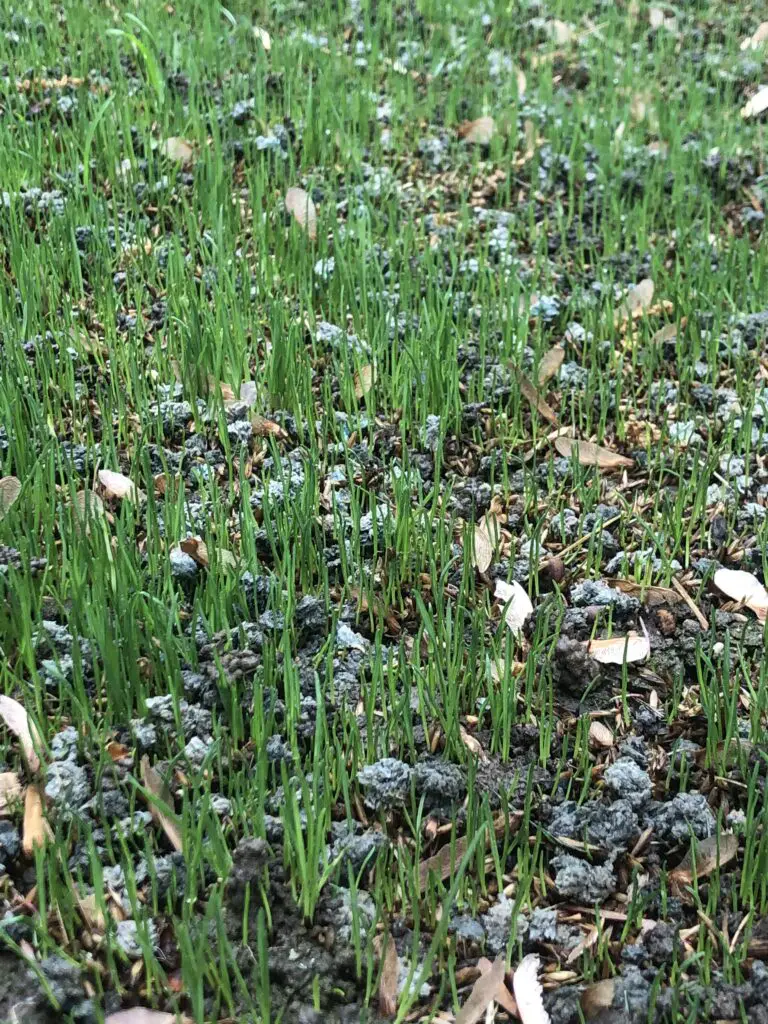
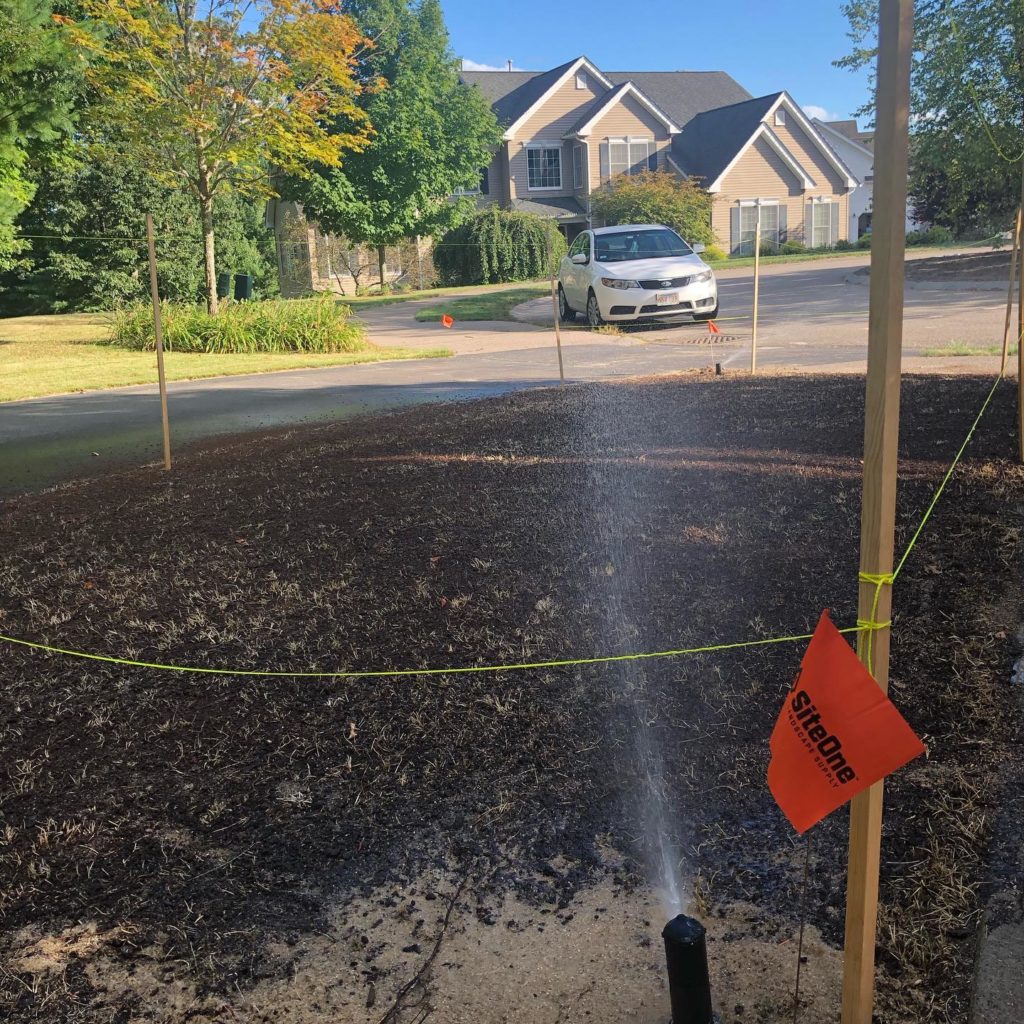
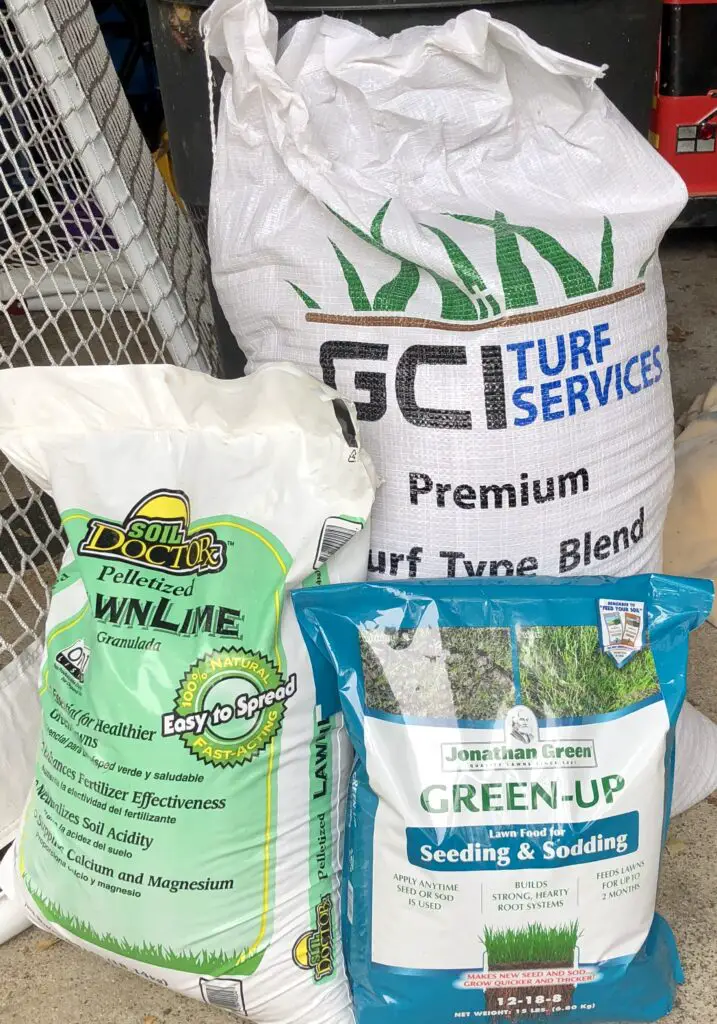
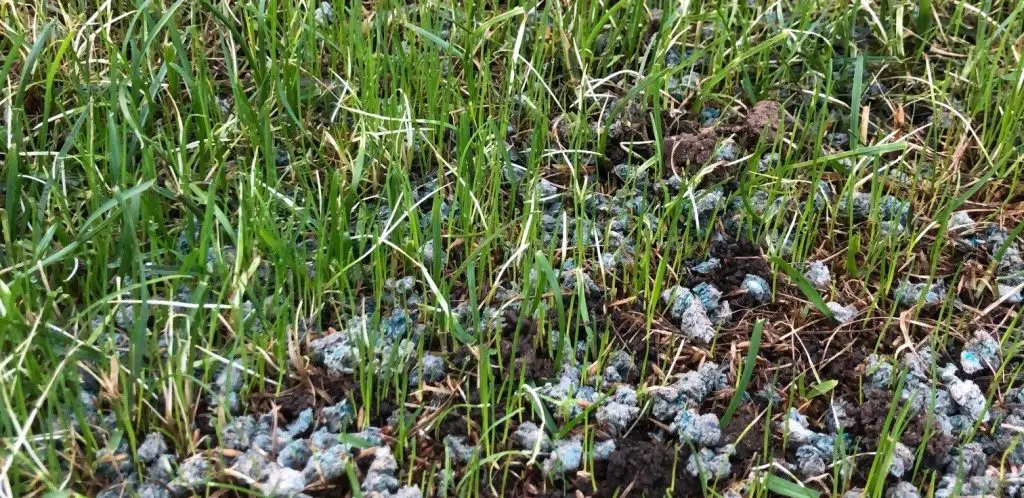
Grass Seeding Overview
You can read out full lawn renovation guide, as well as tips for overseeding, how often to water grass seed, and how long it takes for grass to grow, but at a high level, here’s what you’ll need when planting grass seed:
- Late summer and early fall are the best times to seed
- Grass seed cover: Patchmaster, straw grass seed cover, or peat moss
- Starter fertilizer
- Grass variety
Recommended Grass Seed
- Best Cool-Season Blend: Jonathan Green Black Beauty Ultra (blend of Kentucky Bluegras, Perennial Ryegrass, tall fescue, and fine fescue)
- Best Monostand: GCI TTTF (100% Turf Type Tall Fescue)
- Outsider Pride: Mix/match a specific blend
| GRASS-TYPE | SEEDING POOR LAWN | SEEDING NICE LAWN | SEEDING NEW LAWN |
| Kentucky Bluegrass | 2-3 lbs. per 1,000 sq. ft. | 1-2 lbs. per 1,000 sq. ft. | 3-4 per 1,000 sq. ft. |
| Perennial Ryegrass | 7-9 lbs. per 1,000 sq. ft. | 4-7 lbs. per 1,000 sq. ft. | 9-11 lbs. per 1,000 sq. ft. |
| Fine Fescue | 6-8 lbs. per 1,000 sq. ft. | 3-6 lbs. per 1,000 sq. ft. | 8-10 lbs. per 1,000 sq. ft. |
| Turft Type Tall Fescue | 6-8 lbs. per 1,000 sq. ft. | 3-6 lbs. per 1,000 sq. ft. | 8-10 lbs. per 1,000 sq. ft. |
How much will a 50 lb bag of grass seed cover?
A 50 pound bag of grass seed will cover between 5,000 – 12,000 square feet of a new lawn, and 8,00 – 16,00 overseeding an existing lawn.
How much does 20lbs of grass seed cover?
Depending on the type of grass seed, 20 pounds of grass seed will cover approximately between 2,000 – 3,000 square feet of a new lawn, and 3,500 – 6,500 overseeding an existing lawn

